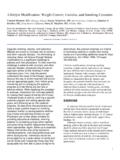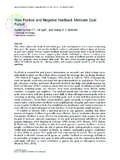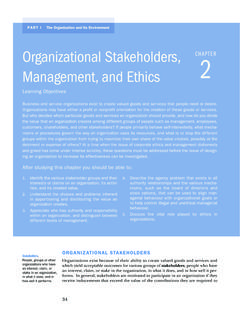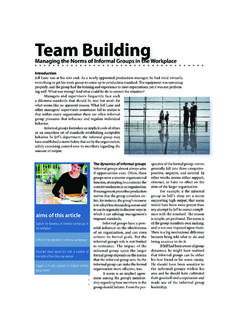Transcription of Emergency Services Interoperability Survey
1 Emergency Services Interoperability Survey Report and Recommendations Skills for Justice is part of JSSC group, which is an independent, employer-led charity enabling employers and employees across the world to develop skills for success. JSSC group is the Sector Skills Council (SSC) for the UK justice, frontline Services and professional Services sectors. This report has been prepared and authored by Poppy James, Senior Researcher, Skills for Justice. Copyright JSSC 2013. All rights reserved. No part of this work may be reproduced, stored in a retrieval system of any nature, or transmitted, in any form or by any means including photocopying and recording, without the prior written permission of JSSC, the copyright owner.
2 Licences issued by the Copyright Licencing Agency or any other reproduction rights organisation do not apply. If any unauthorised acts are carried out in relation to this copyright work, a civil claim for damages may be made and/or a criminal prosecution may result. Contents Background to the research .. 1 1. Survey Population and Organisational Characteristics .. 6 2. Respondents Experience at Major Incidents.. 7 3. Training and exercising .. 9 4. Knowledge Attrition and Encouraging Adoption of Initiatives .. 20 4. Doctrine and Sharing Lessons Learnt .. 23 5. Organisational Culture and Willingness to Work Together.
3 27 6. Communications Technology .. 27 4. Situational Awareness .. 28 Conclusion .. 35 Bibliography .. 36 List of Figures Figure 1. Service Profile of Respondents .. 6 Figure 2. Respondents Job Roles .. 6 Figure 3. Respondents Command Level .. 7 Figure 4. Respondent Time in Role .. 7 Figure 5. Respondent Gender .. 7 Figure 6: Fulfilled a Command Role at a Major Incident .. 8 Figure 7. Times Fulfilled a Command Role at a Major Incident .. 8 Figure 8. Barriers to Interoperability .. 9 Figure 9. Barriers to Sharing Information .. 10 Figure 10. Barriers to Using Airwave Interoperability Channels.
4 11 Figure 11. Barriers to Conducting Joint Dynamic Hazard Assessments .. 12 Figure 12. Training in the Use of Lexicon and Terminology .. 13 Figure 13. Sufficiently Trained to Feel Confident in Emergency Role .. 14 Figure 14. Frequency of Joint Training by Command 15 Figure 15. Frequency of Joint exercising by Command Level .. 16 Figure 16. Frequency of Joint Training by Service .. 16 Figure 17. Frequency of Joint exercising by Service .. 17 Figure 18. Perception of Interoperability and Time Spent with Peers .. 18 Figure 19. Most effective Training for Increasing Interoperability .
5 19 Figure 20. Use of Airwave Interoperability Channels .. 20 Figure 21. Awareness of the Lexicon of Emergency Management Terminology .. 22 Figure 22. Receipt of Pre-Olympics Package .. 23 Figure 23. Read Local Resilience Forum Plans .. 23 Figure 24. Reasons Why Pre-Olympics Package Not Received .. 24 Figure 25. Reasons Why Local Resilience Forum Plans Not Read .. 25 Figure 26. Occurrence of Joint Debriefs Following Incidents .. 26 Figure 27. Mnemonics in Use .. 29 Figure 28. Decision Making Models in Use .. 30 Figure 29. User Rated Mnemonic Effectiveness .. 31 Figure 30. Information Sharing Between Different Levels of Command.
6 31 Figure seeking Out On Scene Commanders from Other Services .. 32 Figure 32. Frequency Seeking Out On Scene Commanders from Other Services .. 32 Figure 33. Ability to Identify Senior Person 33 Figure 34. Clarity of Coordination Responsibility .. 34 Executive Summary The Joint Emergency Services Interoperability Programme (JESIP) has been established to bring about changes at the operational level that lead to the Emergency Services working together more effectively at major incidents. Skills for Justice have delivered this research project as part of the Employer Investment Fund (EIF).
7 The EIF, managed by UKCES, stimulates employer investment in skills. This project is one of a wider programme of projects designed to inform the development of working across boundaries in the Justice and Community Safety sector. In 2012 Skills for Justice examined inquest reports from major incidents and identified recurring recommendations relating to Interoperability between the Emergency Services . This Survey of nearly 2000 employees from the Emergency Services builds upon our understanding of the barriers to Interoperability and provides an evidence base that can support JESIP in developing interventions.
8 The following key findings have been drawn from the full Survey : 95% of respondents stated that a lack of joint training was a barrier to effective interoperable working 93% of respondents stated that a lack of joint exercising was a barrier to effective interoperable working 71% of operational commanders have experienced joint training either never or less than every two years 91% of respondents stated that a lack of practices, protocols, training and exercising was the most significant barrier to effective sharing of information of the options included 62% of respondents considered the lack of knowledge regarding each other s approach was the most significant barrier to conducting successful Joint Dynamic Hazard Assessments of the options included 75% of respondents stated that joint debriefing from incidents happens either never or only sometimes 95% of respondents thought that a move to a single joint decision making model would support Interoperability These findings provide a measure to compare progress
9 Against following the conclusion of the JESIP workstreams. Following analysis of the Survey findings the report makes the following recommendations: Joint training and exercising is consistently identified as the most important factor in the effectiveness of Interoperability . Nationally developed and funded joint training should be provided for responders, particularly those working in Bronze Command. An awareness of the role, approach and requirements of other Services is a basic requirement of all Interoperability protocols and this knowledge should be considered a key training standard.
10 Joint training and exercising will be most beneficial where it provides personal contact with responders from other Services and includes practical elements that allow assumptions and equipment to be tested. Training does not guarantee that interventions will become established in the Emergency response. Interventions that compete with intuitive, ingrained alternatives are easily abandoned under the pressure of the Emergency response. Interventions must address a real need, be simple, reliable and build on processes that are familiar from routine operations. If initiatives are not consistently used knowledge attrition will occur.








